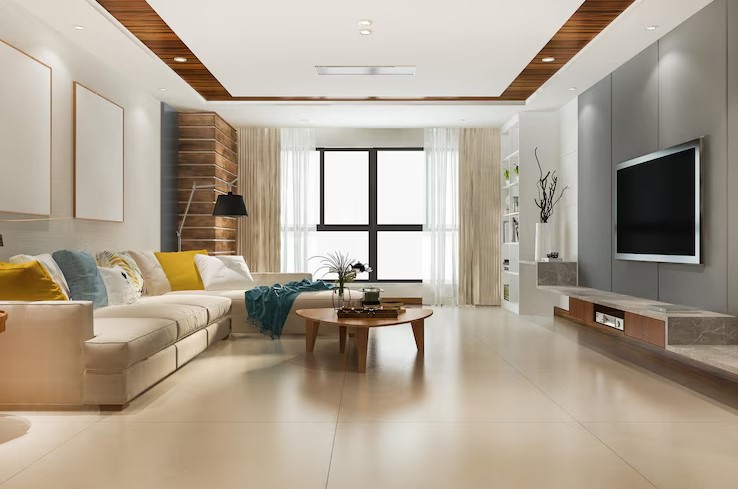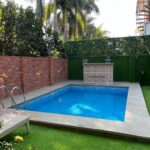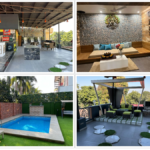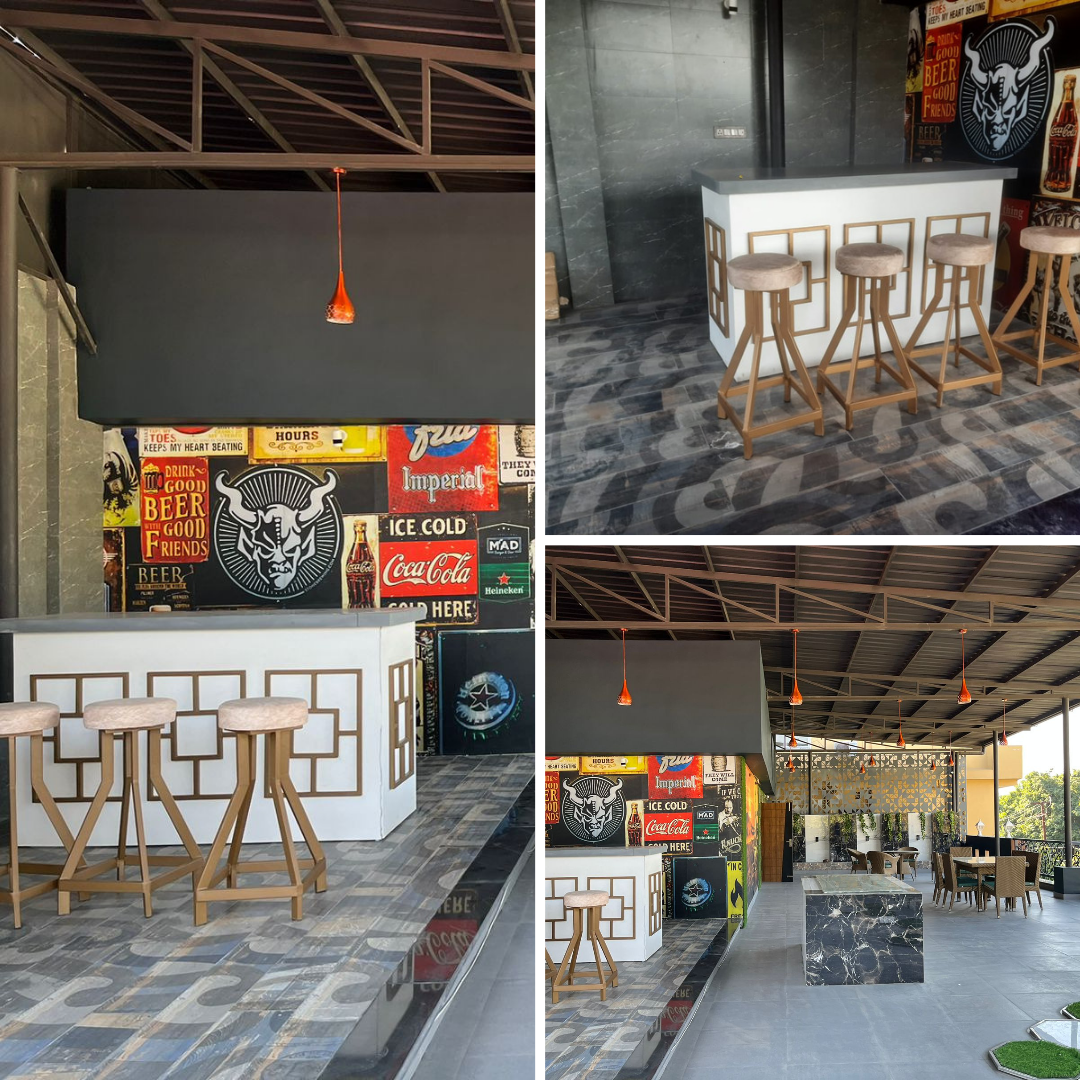What Are the Different Materials Used for Interior Design?
- Amodini Systems
- 0 Comments
Interior design is not just about arranging furniture or choosing the right colors. A big part of creating beautiful spaces lies in selecting the right materials. From natural wood to synthetic acrylics, every material brings its own style, texture, and durability to a space. Whether you’re designing a cozy home or a luxury office, knowing the different types of materials can help you make better decisions. We’ll walk you through the main materials used in interior design.
1. Wood
Wood is one of the oldest and most commonly used materials in interior design. It gives warmth and a natural look to any space. There are many types of wood like teak, oak, pine, and walnut.
Uses:
-
Furniture (tables, chairs, beds)
-
Flooring (hardwood floors)
-
Wall paneling and ceilings
Advantages:
-
Strong and durable
-
Easy to polish and shape
-
Adds warmth and richness
Types of Wood:
| Type of Wood | Characteristics | Best Used For |
|---|---|---|
| Teak | Strong, water-resistant | Outdoor furniture, flooring |
| Oak | Hard, grainy texture | Cabinets, flooring |
| Pine | Soft, easy to work with | Shelves, lightweight furniture |
2. Glass
Glass adds modern elegance and allows natural light into spaces. It is used in windows, doors, partitions, and furniture.
Uses:
-
Windows and skylights
-
Glass doors and dividers
-
Table tops and shelves
Advantages:
-
Makes spaces look larger
-
Reflects light
-
Easy to clean
There are many types of glass like frosted, tinted, clear, and laminated glass that can be selected based on privacy and aesthetics.
3. Metal
Metal is widely used in modern and industrial-style interiors. It brings a sleek and shiny touch to design.
Uses:
-
Furniture frames
-
Lighting fixtures
-
Stair railings and kitchen cabinets
Advantages:
-
Durable and strong
-
Long-lasting
-
Gives a clean, contemporary look
Common metals used are steel, aluminum, brass, and copper. Each has a different color and shine.
4. Stone
Natural stone brings an earthy and rich texture to interiors. Stones like marble, granite, limestone, and slate are popular in luxurious designs.
Uses:
-
Flooring
-
Kitchen countertops
-
Bathroom walls and vanity tops
Advantages:
-
Strong and long-lasting
-
Unique natural patterns
-
Adds value to property
Popular Stones Used:
| Stone Type | Features | Common Use |
|---|---|---|
| Marble | Elegant, smooth finish | Bathrooms, floors |
| Granite | Hard, heat-resistant | Kitchen countertops |
| Slate | Rough texture, non-slip | Outdoor and bathroom flooring |
5. Fabric and Textiles
Fabric is essential in interior design for softening hard surfaces and adding comfort. You’ll find it in curtains, sofas, cushions, and rugs.
Uses:
-
Upholstery
-
Window treatments
-
Wall hangings and carpets
Advantages:
-
Available in many colors and designs
-
Adds softness and texture
-
Easy to replace or update
Common fabrics include cotton, silk, wool, polyester, and velvet. Each gives a different feel and look to interiors.

6. Plastic and Acrylic
Plastic materials are used in modern, budget-friendly designs. Acrylic is a type of plastic that looks like glass but is lighter and stronger.
Uses:
-
Chairs and tables
-
Storage units
-
Decorative items
Advantages:
-
Light and easy to mold
-
Low cost
-
Comes in many colors and shapes
7. Ceramics and Tiles
Ceramics and tiles are used for both functional and decorative purposes. They are especially popular in kitchens and bathrooms.
Uses:
-
Flooring and wall cladding
-
Kitchen backsplashes
-
Decorative pieces
Advantages:
-
Water-resistant
-
Easy to clean
-
Comes in many designs and colors
There are different kinds like ceramic, porcelain, and vitrified tiles, each with its own style and strength.
8. Concrete
Concrete is a versatile material used in both modern and industrial interior styles. It gives a raw and unfinished look that many find appealing.
Uses:
-
Walls and flooring
-
Kitchen countertops
-
Planters and furniture
Advantages:
-
Strong and durable
-
Fire-resistant
-
Low maintenance
Polished concrete flooring is gaining popularity for its clean and minimal look.
9. Leather
Leather adds luxury and texture to interior spaces. It is most often used in furniture like sofas and chairs.
Uses:
-
Sofas and recliners
-
Cushions and bed headboards
-
Wall panels
Advantages:
-
Long-lasting
-
Stylish and elegant
-
Comfortable and soft
Faux leather is a more affordable option and also animal-friendly.
10. Bamboo and Cane
Bamboo and cane are eco-friendly materials that add a natural and rustic feel to interiors. These are great for tropical or bohemian designs.
Uses:
-
Chairs and beds
-
Room dividers
-
Decor items like lamps
Advantages:
-
Environment-friendly
-
Lightweight and flexible
-
Affordable
These materials are gaining popularity in sustainable and green interior designs.
Conclusion
Choosing the right material in interior design depends on your style, budget, and how you use the space. Natural materials like wood, stone, and fabric bring warmth, while modern materials like glass, metal, and plastic offer a clean and sleek look. Each material has its strengths and weaknesses, and combining them smartly can create beautiful and functional interiors.
Always think about where and how the material will be used before selecting it. Also, consider maintenance, durability, and cost.
Whether you are building a new home or redesigning your space, understanding these interior design materials can help you make the best choices.





















